Disclosure: This article contains affiliate links. We may earn a commission from purchases at no extra cost to you, which helps our travel content.
Mumbai has always held a special place in my heart. While it's often the glitzy Bollywood productions that capture international imagination, the true soul of this megalopolis reveals itself through experiences that rarely make it to the silver screen. As someone who grew up in Delhi but frequently visited family in Mumbai, I've witnessed this city's remarkable evolution while its cultural foundations remain steadfast. During my recent winter sabbatical—a welcome break from studying Pacific Northwest forest ecosystems—I spent a week rediscovering Mumbai's authentic cultural tapestry with fresh eyes. What follows is my biologist's approach to cultural immersion: observant, systematic, yet deeply appreciative of the organic chaos that makes Mumbai pulse with life. These experiences won't break your budget but will enrich your understanding of India's most dynamic city far beyond any cinematic portrayal.
1. Dawn at Sassoon Docks: Mumbai's Marine Ecosystem
For the scientifically curious traveler, Mumbai's day begins not with an alarm clock but with the rhythmic slapping of waves against weathered wood at Sassoon Docks. Built in 1875, this working fishing harbor offers a rare glimpse into Mumbai's original economic engine, one that predates the city's financial and entertainment industries.
I arrived at 5:30 AM, when the Arabian Sea delivers its bounty to the city. The Koli fishing community—Mumbai's indigenous inhabitants—have maintained their traditions despite centuries of colonial rule and rapid urbanization. Women in vibrant saris sort through catches of bombil (Bombay duck), pomfret, and mackerel with remarkable efficiency, categorizing species with a precision that would impress any taxonomist.
The sensory experience is overwhelming: the pungent scent of fresh catch, the cacophony of price negotiations, and the brilliant colors of fish scales catching first light. As a biologist, I found myself mentally cataloging species while simultaneously absorbing the complex social ecosystem at work. This is Mumbai at its most authentic—a marine-dependent community that operates on principles established generations before skyscrapers dominated the skyline.
The dock experience provides a perfect lens through which to understand Mumbai's relationship with its coastline and offers insight into the environmental challenges facing traditional fishing communities as climate change and overfishing transform their ancestral waters.
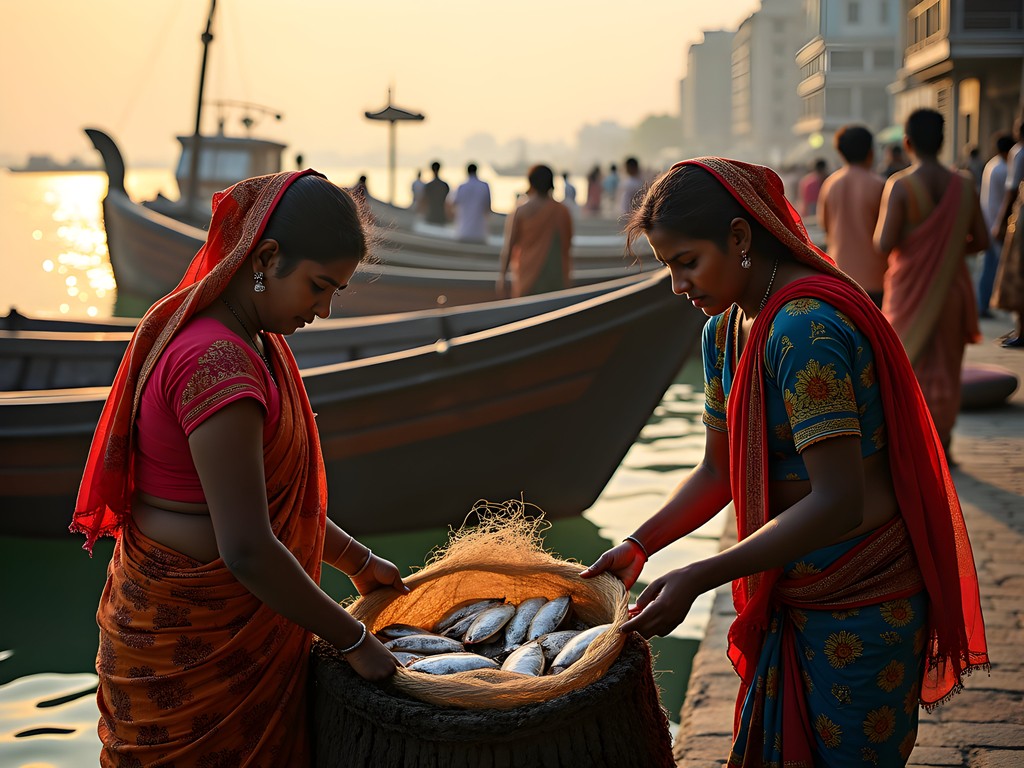
💡 Pro Tips
- Arrive between 5:00-6:00 AM for peak activity
- Wear closed-toe shoes that can withstand wet surfaces
- Bring small denominations for purchasing fresh seafood directly
2. Dharavi Beyond the Poverty Tourism
Dharavi has unfortunately become synonymous with 'slum tourism'—a problematic approach that often reduces complex communities to poverty spectacles. As someone who studies ecosystems professionally, I sought a more nuanced understanding of this remarkable urban environment that functions as a self-contained economic powerhouse generating an estimated $1 billion annually.
I connected with Reality Tours, an organization that reinvests 80% of profits into community development programs. My guide, Fahim, grew up in Dharavi and offered perspectives no outsider could provide. What immediately struck me was the incredible efficiency of space utilization—a principle that natural systems often demonstrate in resource-constrained environments.
The recycling industry here operates with remarkable precision. Nearly 80% of Mumbai's plastic waste is processed in Dharavi, where workers sort, clean, shred, and pelletize materials for reuse. The leather, textile, and pottery industries function in similar interconnected systems.
Most revealing was visiting the community's urban gardens—small but productive spaces where residents grow vegetables using composted organic waste. These gardens represent community resilience and ecological knowledge that would impress any environmental scientist.
Before visiting Dharavi, I recommend reading Behind the Beautiful Forevers by Katherine Boo for important context. During the tour, I carried my belongings in a anti-theft daypack, which kept my camera and field notes secure while allowing me to move comfortably through narrow pathways.

💡 Pro Tips
- Choose community-reinvestment tour operators
- Respect privacy by asking before photographing people
- Visit the pottery district to support local artisans directly
3. The Hidden Art Deco Architecture Walk
While most visitors flock to Gateway of India and other colonial landmarks, Mumbai houses the world's second-largest collection of Art Deco buildings after Miami—a fact that delights architectural enthusiasts but remains largely unknown to casual visitors.
I began my self-guided tour at Marine Drive, where the curved boulevard showcases a stunning array of 1930s Deco masterpieces. The buildings display a fascinating hybrid aesthetic that marries Western Art Deco elements with distinctly Indian motifs—a visual representation of cultural adaptation during the late colonial period.
The Regal Cinema, with its striking vertical lines and geometric patterns, stands as a testament to Mumbai's long-standing love affair with cinema that predates Bollywood's global recognition. Nearby, the Eros Theatre's rounded corners and streamlined forms exemplify the optimistic futurism of the Art Deco movement.
What fascinated me most was observing how these buildings have adapted to climate challenges over decades. The characteristic eyebrow overhangs aren't merely decorative—they're functional elements that shield windows from monsoon rains and harsh sunlight, demonstrating an early form of climate-responsive design.
For this walking tour, I relied heavily on my pocket binoculars to study architectural details from street level. Their compact size made them perfect for urban exploration, allowing me to examine ornate façade elements that would otherwise go unnoticed.
The walk from Marine Drive through Churchgate to the Oval Maidan provides a remarkable architectural timeline, where Art Deco buildings face their Gothic predecessors across the cricket grounds—a visual dialogue between colonial and early independent India.

💡 Pro Tips
- Download the Art Deco Mumbai app for self-guided tours
- Visit early morning or late afternoon when lighting accentuates architectural details
- Look for buildings with 'eyebrow' features—overhangs above windows that are uniquely Mumbai Deco
4. Kala Ghoda Arts Precinct: Cultural Evolution in Real Time
The Kala Ghoda district represents Mumbai's artistic heartbeat—a neighborhood where colonial-era buildings have been repurposed into galleries, cafés, and design studios. Named after a black stone horse statue that once stood here, the area embodies cultural adaptation and resilience.
The Jehangir Art Gallery serves as the neighborhood's anchor, hosting exhibitions that range from traditional Indian art forms to contemporary experimental works. During my visit, I was fortunate to witness an installation examining the ecological impact of urbanization on Mumbai's original mangrove ecosystems—a perfect intersection of my scientific interests and artistic expression.
What makes Kala Ghoda particularly special is its democratization of art. Street installations make creative expression accessible to everyone, not just gallery patrons. The annual Kala Ghoda Arts Festival (February) transforms the entire neighborhood into an open-air exhibition space, though I find the area more contemplative during regular weekdays.
The district also houses the David Sassoon Library, a Neo-Gothic treasure where I spent hours examining historical documents about Mumbai's ecological transformation. The reading room, with its wooden ceiling fans and green reading lamps, feels frozen in time—a quiet counterpoint to the city's perpetual motion.
Nearby, contemporary design shops showcase how traditional Indian crafts are being reimagined for modern contexts. I was particularly drawn to stores featuring textiles that use natural dyes and traditional weaving techniques—sustainable practices that align with my environmental values.
To document the architectural and artistic details throughout Kala Ghoda, I used my travel camera, which captures remarkable detail in varied lighting conditions without drawing attention or requiring bulky equipment.

💡 Pro Tips
- Visit on Tuesdays when most galleries change exhibitions
- Check the schedule for free artist talks at Jehangir Art Gallery
- Explore side streets where emerging artists often display works at smaller venues
5. Banganga Tank: Ancient Spiritual Ecosystem
Hidden within Mumbai's Malabar Hill neighborhood lies Banganga Tank, an ancient freshwater pool that predates the city itself. Dating to the 12th century, this sacred site provides a rare glimpse into Mumbai's pre-colonial identity and offers a profound contrast to the surrounding luxury apartments.
As a biologist, I was immediately drawn to the tank's ecological aspects. The rectangular pool sustains a microhabitat within the urban landscape, supporting various aquatic organisms and attracting birds rarely seen elsewhere in the city. The symbiotic relationship between religious practice and ecosystem maintenance is evident—the tank's sacred status has protected it from development for centuries.
The surrounding area forms a living archaeological site where narrow lanes are lined with shrines and temples. Most remarkable are the resident priests who maintain traditions established centuries ago, performing rituals at dawn and dusk that connect Mumbai's hypermodern present with its ancient Hindu foundations.
I visited during evening aarti (prayer ceremony), when oil lamps reflected on the water's surface created mesmerizing patterns. The ceremony's sensory dimensions—fragrant incense, resonant bells, and vedic chants—produced an experience that transcended typical tourism.
The site demonstrates how spiritual practices often serve as conservation mechanisms. The tank's waters remain protected not through environmental legislation but through cultural reverence—a phenomenon I've observed in sacred groves throughout India where religious beliefs have preserved biodiversity more effectively than modern conservation efforts.
For this deeply atmospheric location, I recorded audio using my portable recorder, capturing the layered soundscape of prayers, bells, and water that photographs alone couldn't convey.
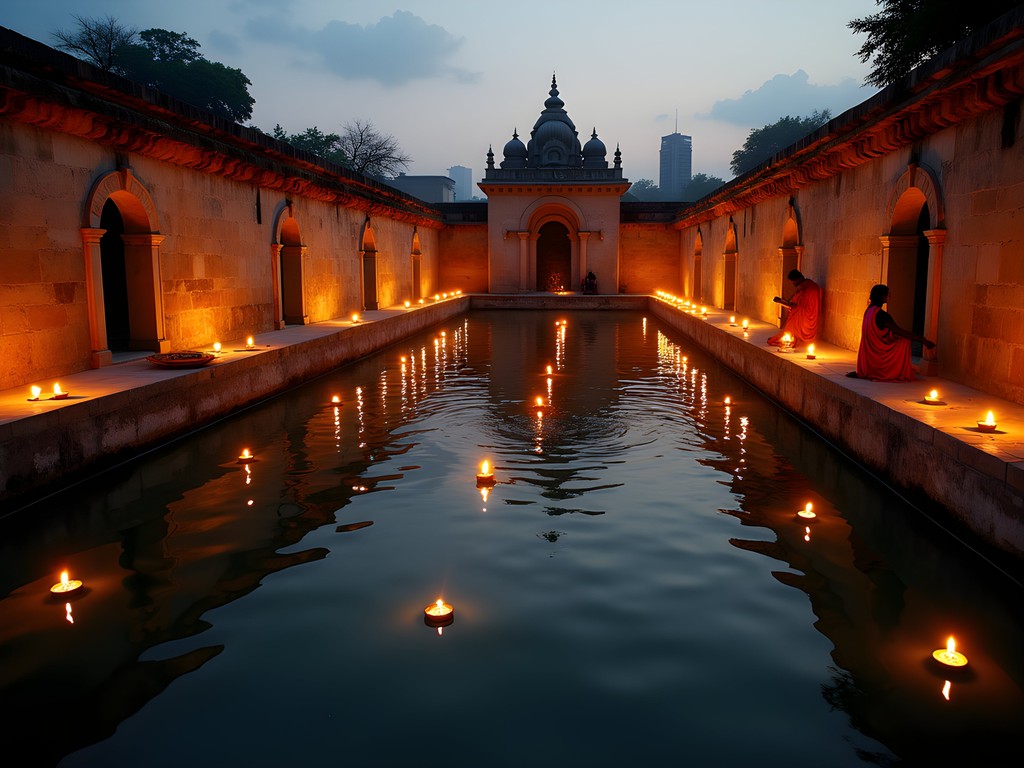
💡 Pro Tips
- Visit during morning (7-8 AM) or evening (6-7 PM) prayer ceremonies
- Remove shoes before approaching the tank area
- Bring small denominations for optional donations at temples
6. Chor Bazaar: Artifact Archaeology
Mumbai's Chor Bazaar (literally 'Thieves Market') presents a fascinating study in material culture and urban mythology. Despite its name, which originated when stolen goods reportedly appeared in its stalls, today's market specializes in antiques, vintage items, and cultural artifacts that tell Mumbai's complex story through material objects.
Navigating the labyrinthine alleys between Mohammed Ali Road and Mutton Street requires a researcher's patience and keen eye. The market operates as an informal museum of everyday life, where colonial-era furniture, vintage Bollywood posters, Victorian doorknobs, and traditional brass items coexist in gloriously chaotic displays.
Mini Decorators on Mutton Street became my favorite shop, where fourth-generation owner Anwar carefully preserves vintage photographs of Mumbai alongside Art Deco light fixtures salvaged from demolished buildings. Each item carries ecological and historical information—the quality of brass indicating ore sources, wood types revealing forestry practices of past centuries.
What makes Chor Bazaar culturally significant is how it functions as an unofficial archive of Mumbai's material history, preserving objects that formal institutions might overlook. The market demonstrates how communities develop systems to recirculate material goods—a form of sustainability that predates modern recycling movements.
The experience rewards those who engage with vendors beyond transactional relationships. When I expressed genuine interest in the provenance of a 1940s camera, the shop owner invited me to see his private collection of photography equipment, revealing how these tools documented Mumbai's transformation over decades.
For serious antiquing, I recommend bringing a collapsible tote bag that packs down small but expands to carry unexpected treasures without plastic waste.
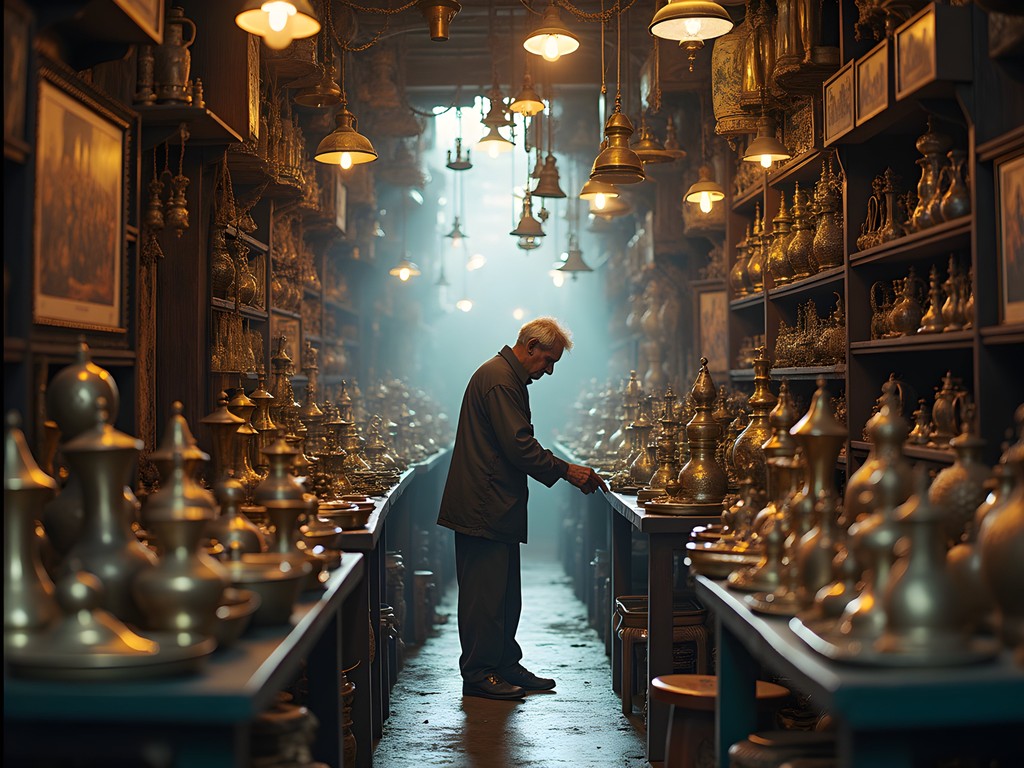
💡 Pro Tips
- Visit on Fridays when new merchandise typically arrives
- Learn basic price negotiation phrases in Hindi for more authentic interactions
- Photograph items with vendor permission before purchasing as documentation
7. Dabbawalas: Mumbai's Remarkable Food Distribution System
As someone who studies ecological systems professionally, Mumbai's dabbawala network represents one of the most fascinating human systems I've encountered—a lunch delivery service that has operated for over 125 years with remarkable precision despite minimal technology.
Each day, approximately 5,000 dabbawalas collect 200,000 home-cooked lunches from residences across suburban Mumbai and deliver them to office workers in the downtown business districts. The system uses a simple color-coding method and operates with Six Sigma-level efficiency (fewer than 3.4 errors per million transactions) without digital technology.
Rather than merely observing from afar, I arranged to shadow Raghunath Medge, a third-generation dabbawala, through the Mumbai Dabbawala Association. Beginning at 9:30 AM at Andheri Station, I witnessed the intricate sorting system where metal tiffins are organized by destination. The dabbawalas themselves represent a remarkable social institution—most come from a single village near Pune and operate on cooperative principles that have remained unchanged for generations.
What makes this system culturally significant is how it bridges Mumbai's domestic and professional spaces. The service emerged from a need to maintain connection with home-cooked food—reflecting deeply held cultural values around purity, caste, and regional identity in Indian food traditions.
From an environmental perspective, the system demonstrates remarkable sustainability. The reusable metal containers eliminate single-use packaging waste, and the delivery method relies primarily on public transportation and foot travel, minimizing carbon emissions. This traditional practice inadvertently addresses modern environmental concerns more effectively than many contemporary food delivery services.
The dabbawala system demonstrates how cultural practices can contain embedded ecological wisdom—something I've observed repeatedly in traditional systems throughout my scientific career.
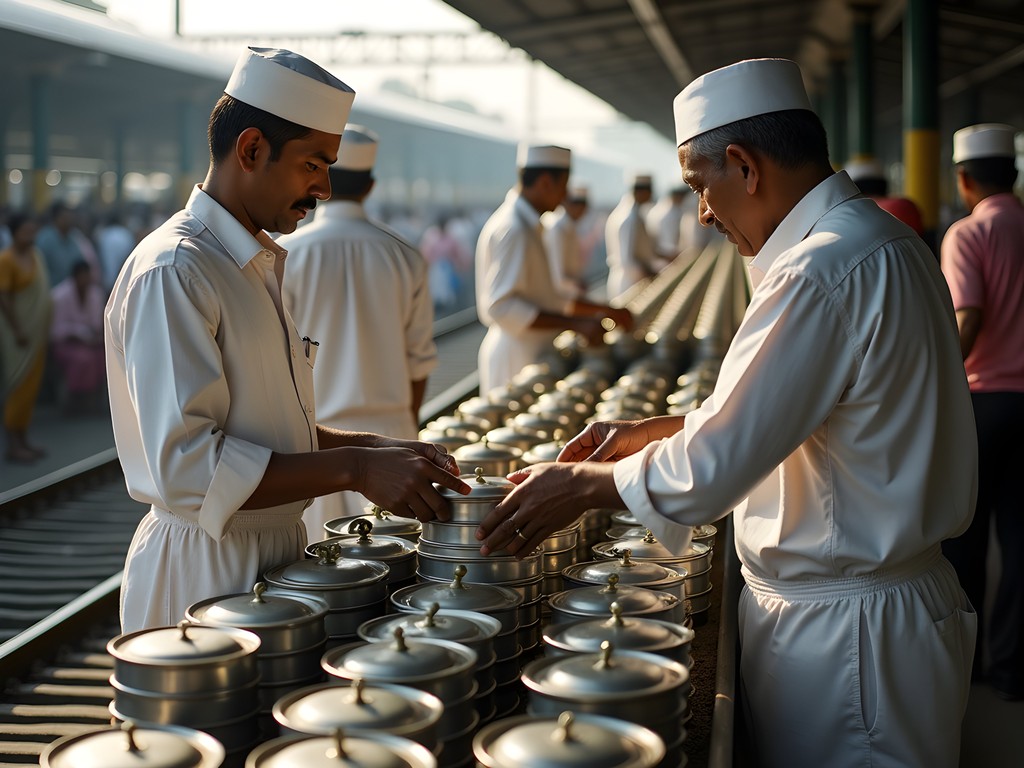
💡 Pro Tips
- Contact the Mumbai Dabbawala Association at least two weeks before your visit to arrange observation
- Position yourself at Churchgate Station between 11:30 AM-12:30 PM to witness the sorting process
- Respect working dabbawalas by not interrupting deliveries for photos
8. Midnight Heritage Walk in Colaba
Mumbai reveals different facets at different hours, but its colonial architecture in the Colaba district achieves a particular magic after midnight when the daytime crowds disperse. While most tourists visit these landmarks during peak hours, I've found that nocturnal exploration offers unparalleled perspective on the city's architectural heritage.
I joined a small group led by Rajan, an architectural historian who conducts specialized night walks focusing on Mumbai's colonial buildings and their adaptation to tropical conditions. Beginning at the illuminated Gateway of India at midnight, we explored when temperatures had cooled and the usual crowds had thinned to almost nothing.
The Chhatrapati Shivaji Terminus (formerly Victoria Terminus) reveals its architectural complexity when lit at night—the blend of Victorian Gothic and traditional Indian elements becoming more pronounced. Rajan explained how the building's design incorporated ventilation features specifically adapted to Mumbai's climate long before mechanical air conditioning.
The Bombay High Court, Naval Dockyard, and University buildings each demonstrate how colonial architecture evolved in response to local environmental conditions—wide verandas, high ceilings, and specialized ventilation systems all represent architectural adaptations to tropical ecology.
What makes this experience culturally significant is how it reveals the dialogue between imperial design ambitions and practical tropical adaptations—architectural elements that tell a story of environmental negotiation often overlooked in standard historical narratives.
For this nighttime exploration, my headlamp proved essential for examining architectural details in shadowed areas while keeping my hands free for photography and note-taking.
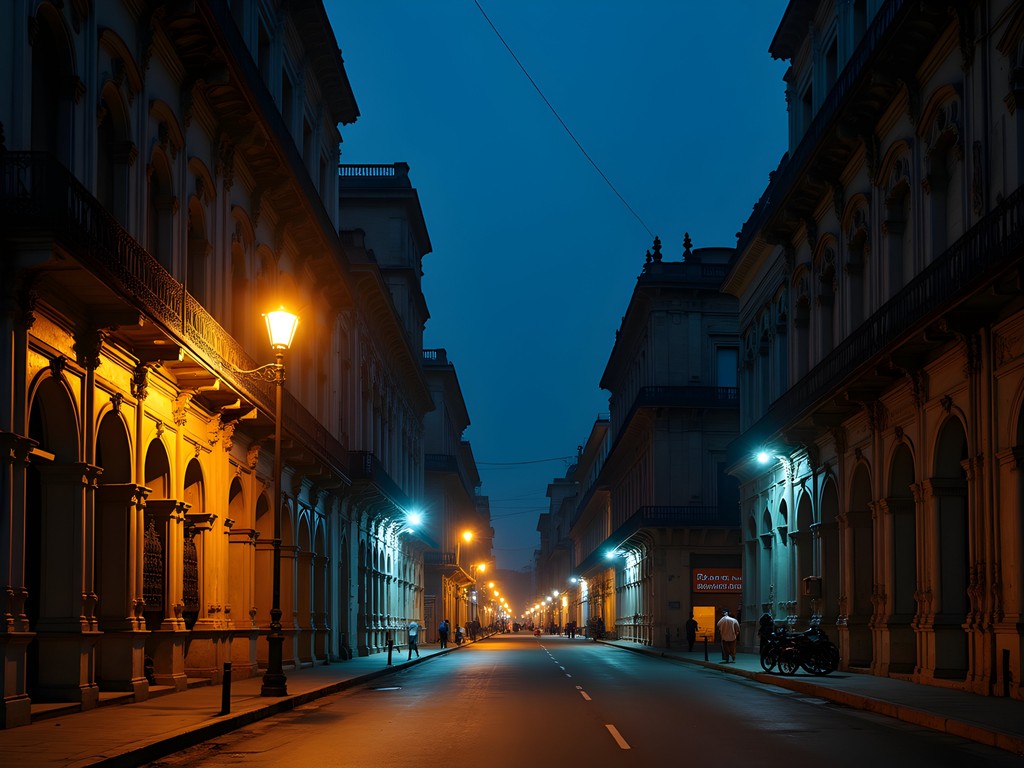
💡 Pro Tips
- Book specialized night heritage walks at least three days in advance
- Bring a light jacket as sea breezes can be cool even in warm seasons
- Wear comfortable shoes as the walk covers approximately 3-4 kilometers
9. Crawford Market to Bhendi Bazaar Food Walk
Mumbai's culinary landscape functions as a living archive of migration patterns, trade histories, and cultural exchanges. To truly understand this dimension, I embarked on a self-guided food walk from Crawford Market (officially Mahatma Jyotiba Phule Market) through the Muslim-influenced Bhendi Bazaar area—a route that traces distinct cultural influences through flavor profiles.
The journey begins at Crawford Market, a Gothic structure dating to 1869 that houses Mumbai's primary fruit and vegetable distribution center. Here, seasonal produce from throughout Maharashtra creates a botanical display that would impress any ecologist. The market's organization reflects agricultural zones radiating outward from Mumbai, with distinct sections for regional specialties.
Moving north into Bhendi Bazaar reveals the profound influence of Mughal, Persian, and Arab culinary traditions. This area was settled by the Bohra Muslim community, whose distinctive food culture combines Middle Eastern techniques with local ingredients. At Tawakkal Sweets, I sampled malpua (sweet pancakes) prepared according to recipes maintained through generations.
What makes this walk culturally illuminating is how it demonstrates food as a vehicle for cultural preservation. Communities that migrated to Mumbai centuries ago maintain distinct culinary identities despite generations of urban integration. The specialized utensils, cooking methods, and ingredient combinations serve as edible cultural artifacts.
From an ecological perspective, traditional food preparations often represent sustainable adaptations to local conditions. Fermentation techniques preserve seasonal abundance, while spice combinations frequently serve antimicrobial functions in tropical climates—indigenous knowledge that merits scientific attention.
The walk culminates at Bohri Mohalla, where evening food stalls specialize in offal preparations that demonstrate nose-to-tail eating practices—an inherently sustainable approach that predates modern ethical food movements by centuries.
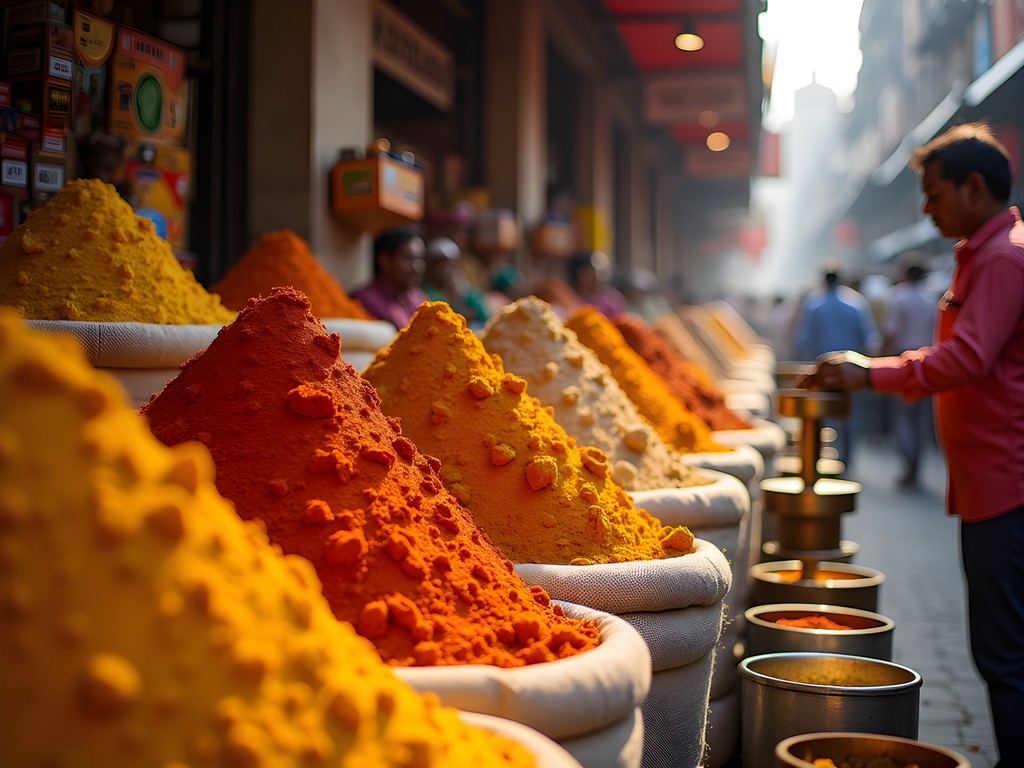
💡 Pro Tips
- Begin the walk around 4:00 PM to see Crawford Market in operation before evening food stalls open
- Carry small change for multiple small food purchases
- Ask permission before photographing food preparation areas
10. Worli Fishing Village at Sunset
While modern Mumbai races toward the future with skyscrapers and financial institutions, Worli Fishing Village represents a community maintaining traditional lifeways amid rapid urbanization. This Koli settlement predates the city itself, with fishing practices that have evolved over centuries in response to the unique ecology of Mumbai's coastline.
I visited during the golden hour before sunset, when fishing boats return with their daily catch and the community engages in net mending, fish drying, and boat maintenance. The village sits in the shadow of the iconic Bandra-Worli Sea Link bridge—a juxtaposition that perfectly captures Mumbai's contrasting realities.
What makes this experience culturally significant is witnessing a community that maintains maritime traditions despite encroachment from development projects. The Koli people represent Mumbai's original inhabitants, and their continued presence serves as a living connection to the city's pre-colonial identity as a fishing archipelago.
The village layout itself contains embedded ecological knowledge. Houses are positioned to maximize natural ventilation from sea breezes, while boat design reflects generations of adaptation to local current patterns and fish behaviors. The fish drying techniques—where bombil (Bombay duck) and other species are preserved through solar dehydration—demonstrate sustainable food preservation methods developed long before refrigeration.
I was fortunate to meet Lakshmi, a Koli woman who has documented traditional fishing knowledge through oral histories. She explained how lunar cycles, tidal patterns, and seasonal variations influence fishing practices—indigenous knowledge systems that parallel scientific understanding of marine ecosystems.
The Worli Koliwada experience culminates at the village's southern tip, where a small shrine dedicated to a sea deity stands as testament to the community's spiritual relationship with the ocean—a worldview that encompasses both practical resource management and sacred reverence.
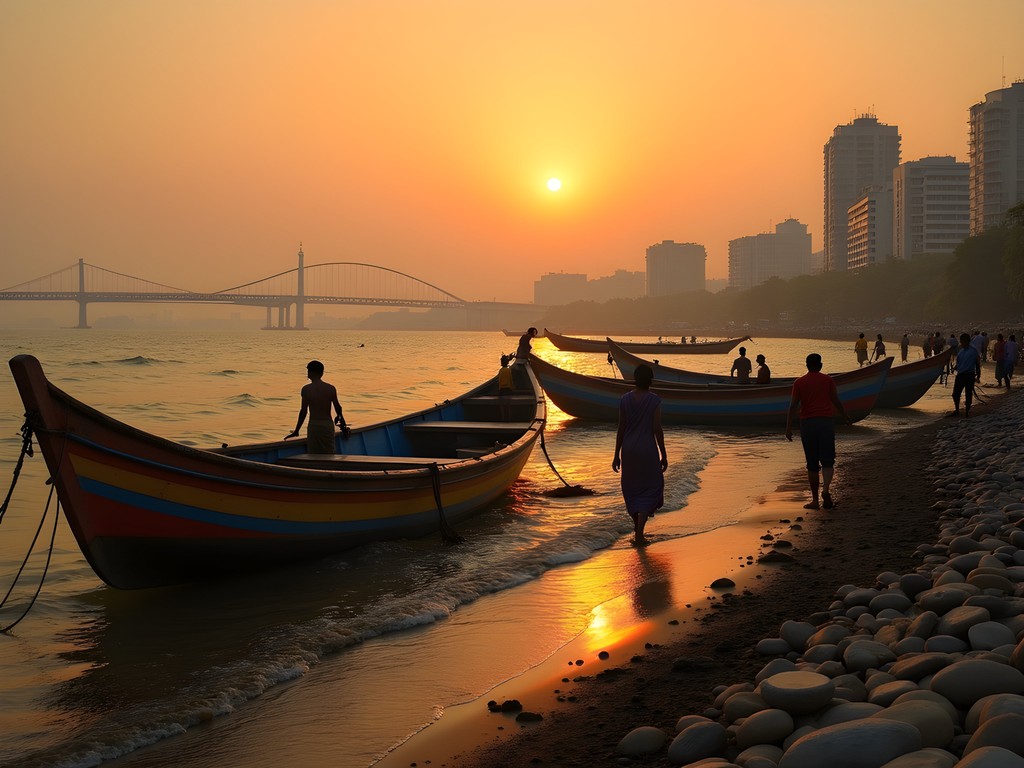
💡 Pro Tips
- Visit between 5:00-6:30 PM when fishing boats return and sunset illuminates the village
- Respect local customs by asking permission before photographing people
- Purchase dried fish directly from producers as a form of economic support
Final Thoughts
Mumbai reveals itself most authentically through these layered experiences that connect past and present, tradition and innovation. As a scientist accustomed to studying ecosystems, I've found that cultural systems operate with similar principles—adapting, preserving, and evolving in response to changing conditions. The city rewards the observant traveler who approaches with patience and genuine curiosity rather than preconceived notions from Bollywood or travel brochures. These ten experiences offer entry points into Mumbai's complex cultural ecosystem, but they merely scratch the surface. The true joy comes from following unexpected connections between them—perhaps a spice encountered at Crawford Market appears in a Koli fish preparation, or architectural motifs from colonial buildings find echoes in contemporary art at Kala Ghoda. I encourage you to approach Mumbai as you would a fascinating field site: with open eyes, detailed notes, and respect for the systems that have evolved over generations.
✨ Key Takeaways
- Mumbai's authentic cultural experiences often connect to the city's ecological foundations as a coastal settlement
- Traditional knowledge systems (fishing, food preservation, architecture) contain sophisticated adaptations to local environmental conditions
- The most meaningful cultural experiences occur at transition times—dawn, dusk, and midnight—when the city's rhythms shift
- Cultural preservation often happens through practical daily activities rather than formal institutions
📋 Practical Information
Best Time to Visit
November to February (winter)
Budget Estimate
₹2,000-3,000 ($25-40) per day excluding accommodation
Recommended Duration
7 days minimum
Difficulty Level
Intermediate

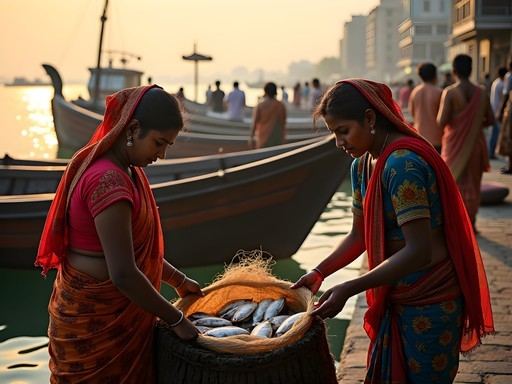
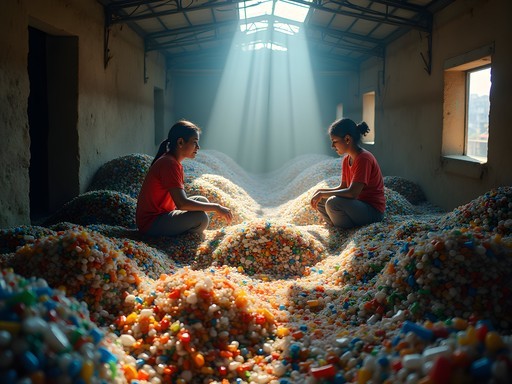
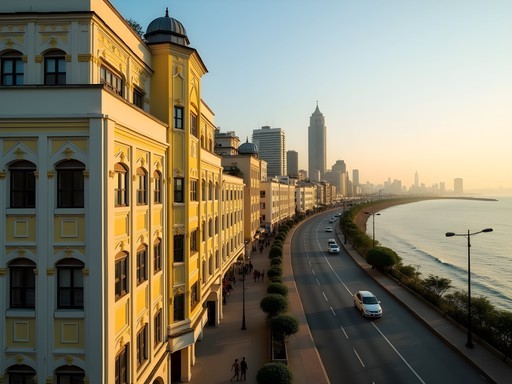

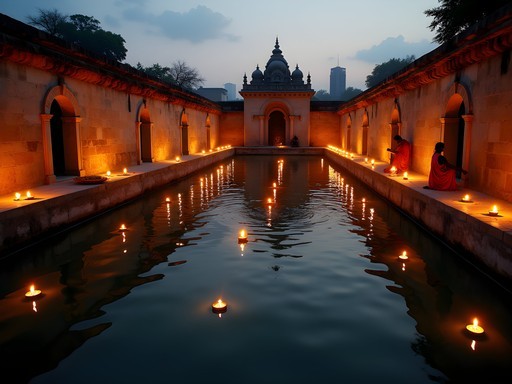
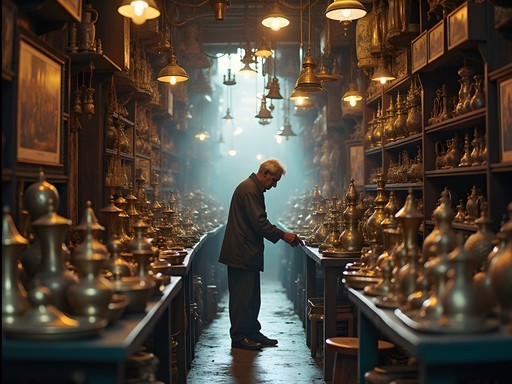


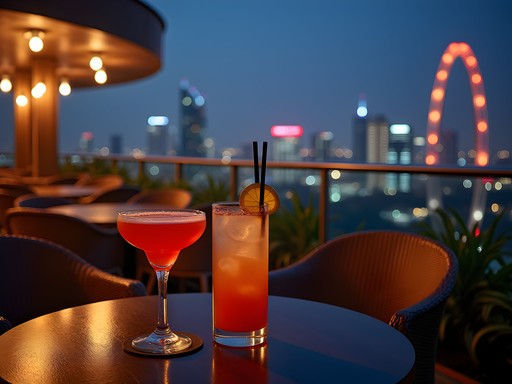
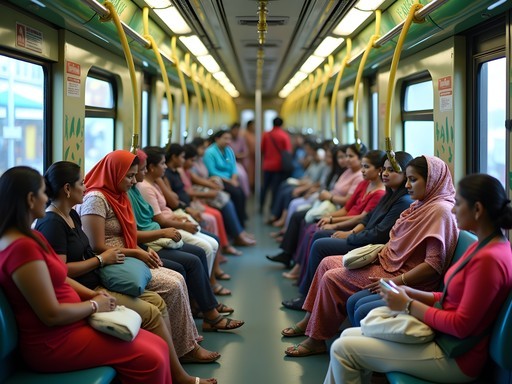
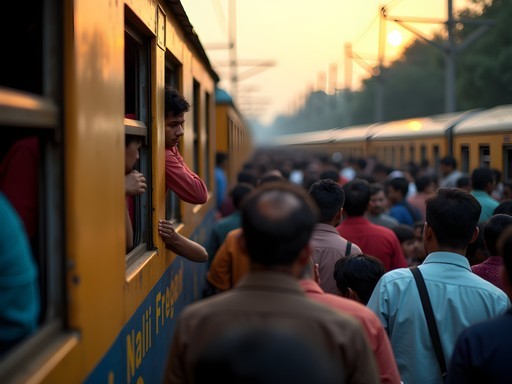
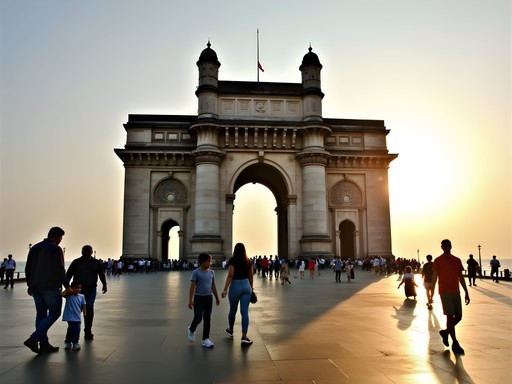
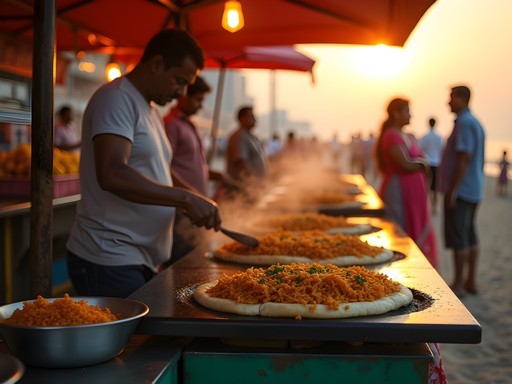
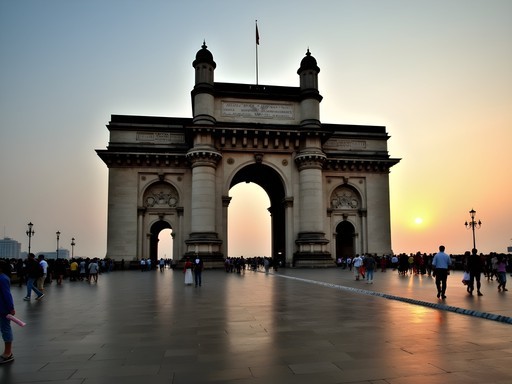


Comments
starninja7513
Great post! Has anyone done the Art Deco walking tour? Is it better to go with a guide or just follow a map on your own? Planning to spend 3 days in Mumbai this November.
luckygal
Just got back from Mumbai and did the Art Deco tour with Bombay Heritage Walks - TOTALLY worth it! The guide knew so many hidden stories and details I would've missed on my own. Plus they take you inside some buildings you can't access otherwise.
freebuddy
Just booked my tickets to Mumbai after reading this! Any recommendations for street food that won't destroy my stomach? I want the authentic experience but also don't want to spend my vacation in the bathroom lol
winterguy8633
Stick to places where you see locals eating in crowds. We had amazing vada pav near CST station and pav bhaji at Juhu Beach with zero issues. Just avoid anything with raw vegetables or unfiltered water!
Jean Wells
Having visited Mumbai annually for the past decade, I find Claire's list refreshingly authentic. I would add Crawford Market to this list - while somewhat touristy, the colonial architecture and the organized chaos inside offer genuine insights into everyday Mumbai life. The spice vendors there are particularly fascinating. For those interested in religious diversity, I recommend visiting Banganga Tank in Walkeshwar - an ancient water tank surrounded by temples that feels worlds away from the bustling city. It's like stepping back in time. Mumbai's contrasts are what make it so compelling - extreme wealth alongside extreme poverty, ancient traditions alongside cutting-edge innovation. The city demands engagement with its complexities rather than surface-level tourism.
skystar4115
Anyone done the Dharavi tours that are actually ethical? Still not sure if I should include it in my itinerary or if it's just poverty tourism no matter how you slice it...
Jean Wells
I've researched this extensively. Reality Tours & Travel is community-based and puts 80% of profits back into local education programs. It's less about gawking at poverty and more about understanding the economic ecosystem. The manufacturing and recycling operations there are quite impressive.
skystar4115
Thanks Jean! That's really helpful. I'll check them out.
tripphotographer
Those Sassoon Docks photos are incredible! What time did you go?
Frank Garcia
Really appreciate this nuanced take on Mumbai, Claire. Too many travel bloggers either romanticize the poverty or only show the glossy side. I spent three months backpacking across India last year and found Mumbai's contradictions the most fascinating aspect. The Art Deco architecture walk was a highlight - I'd add that taking the walk around sunset gives you this amazing golden light on the buildings along Marine Drive. Also worth noting that the local trains are an experience themselves - just avoid rush hour unless you want to be literally crushed! I documented the whole architectural journey in my travel journal which I never leave home without.
skystar4115
Is it safe for solo female travelers to use the local trains? I've heard mixed things.
Frank Garcia
There are women-only cars on most trains which are much less crowded and generally considered safe. Just be aware of your surroundings as you would anywhere!
winterguy8633
Just got back from Mumbai last week and wish I'd seen this post before! The Kala Ghoda area was amazing though - we stumbled on it by accident and spent a whole day exploring the galleries and cafes. The contrast between old colonial buildings and modern art is something else.
luckygal
This is EXACTLY what I've been looking for! Going to Mumbai next month and I'm so tired of the typical tourist stuff. That Dharavi section really made me think - never considered how problematic some of those tours might be. Definitely adding Sassoon Docks to my list now, even though I'm not usually a morning person lol!
starninja7513
The morning trip to Sassoon Docks is totally worth it! Just bring a camera and something to cover your nose - the fish smell is INTENSE.
luckygal
Thanks for the tip! Did you do any of the community-led tours in Dharavi that Claire mentioned?
sunsetmood
I did the Kala Ghoda arts walk last year and it was incredible! The guide pointed out so many details I would have missed. One thing to add - try to time your visit during the Kala Ghoda Arts Festival if you're going in February. The whole area transforms with installations and performances. We stumbled upon an amazing classical dance performance in one of the courtyards. Also, the street food around there is amazing but be careful where you eat. I stuck to places that were crowded with locals and had no issues!
photogal
Just got back from Mumbai and wish I'd seen this first! The Art Deco architecture is seriously underrated.
Venture X
Premium card with 2X miles, $300 travel credit, Priority Pass